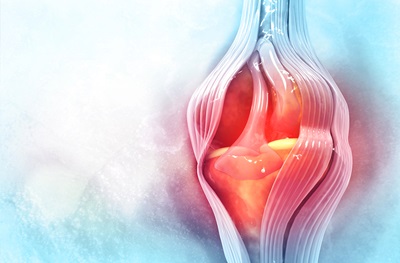
PHILADELPHIA — By softening a cell's nucleus so that it can squeeze its way through dense connective tissues, a group of researchers believe they've demonstrated a new way to help the body efficiently repair injuries. The team of researchers from the University of Pennsylvania tested this theory by using a medication to inhibit enzymes in the nucleus of knee's meniscus cells, which allowed the cells to move through environments that were previously impenetrable. This study was published in Science Advances.
The study focuses on cells in the meniscus, which is a thin layer of dense connective tissue in the human knee. However, the approach could prove effective beyond that specific area.
"In this case, we studied how meniscus cell nuclei can be softened to promote their migration through meniscus tissues. We have also shown similar enhancement of cell migration in other types of connective tissues, such as tendons or the cartilage covering the ends of bones," said the study's first author, Su Chin Heo, PhD, an assistant professor of research of Orthopaedic Surgery, who works within the McKay Orthopaedic Research Lab.
The paper's corresponding author, Robert L Mauck, PhD, the Mary Black Ralston Professor of Orthopaedic Surgery and director of the McKay Lab, noted that "this finding may pave the way for new therapeutics to improve endogenous repair of a number of dense connective tissues that have poor natural healing capacity and are prone to failure."
After an injury, the body requires cells to move into the afflicted area and deposit new tissues so that the tissue can be repaired, like a truck delivering cement to a construction site. Allowing cells to move more freely into these areas could make healing quicker and/or more efficient. However, the team believed that stiff nuclei were the limiting factor, especially when it came to dense tissue such as the meniscus in the knee. Moving through this type of tissue could rupture or otherwise damage a repair cell's nucleus as it tried to squeeze through the tight spaces between cells. As such, damage to tissue like the meniscus could heal poorly, if at all, and result in frequent reinjury.
To remedy that, the team of researchers applied an inhibitor drug to cells called trichostatin A (TCA) that makes the proteins within their nuclei soften up, allowing for the nucleus as a whole to become more malleable. In the truck analogy, this would be like switching from a rigid truck trailer to one with a canvas cover so that it could access a job site at the end of a road with low-hanging trees. The cover could bend as it made its way through the branches but not get hung up or damaged like a boxy, metal trailer would.
In the study, the teams saw that isolated meniscus cells that had been treated with TCA were able to move through areas that were once thought to be impassible to reach defects in tissue. This is important becomes some of the repair methods used for injuries involve fibrous scaffolding, which can also be dense and impenetrable. These areas, too, could be infiltrated with the repair cells whose nuclei were softened, the study showed.
Moving forward, the researchers are preparing to conduct trials of this technique in meniscus tears in large animals. There is also a possibility that this work has applicability beyond just musculoskeletal injuries.
This isn't something we've tested yet, but this approach could potentially be used to enhance the wound healing process of other types of tissues, such as in the skin," Mauck said.
Other authors on this study include Kwang Hoon Song, Shreyasi Thakur, Liane M. Miller, Xuan Cao, Ana P. Peredo, Breanna N. Seiber, Feini Qu, Tristan P. Driscoll, Vivek B. Shenoy, Melike Lakadamyali, and Jason A. Burdick, all of Penn.
Outside funding for this work was provided by the National Institutes of Health (grant number R01 AR056624), the Department of Veterans Affairs (I01 RX000174), the National Science Foundation's Science and Technology Center for Engineering Mechanobiology (CMMI-1548571).






